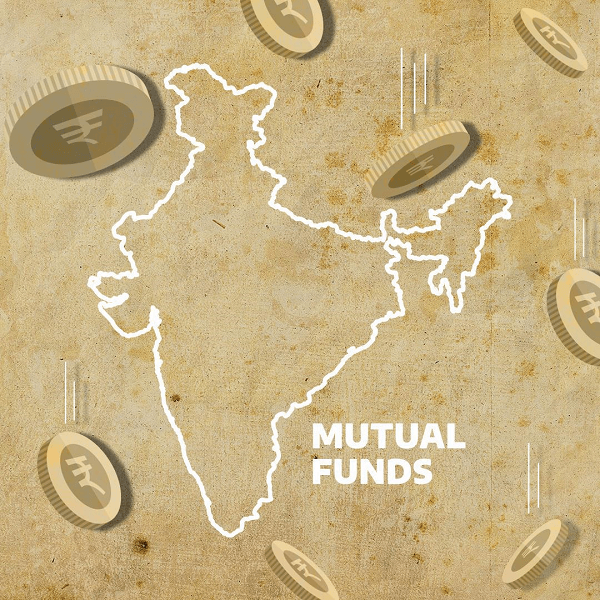Top 10 Mutual Funds in IndiaWhat are Mutual Funds?Investment plans handled by professionals are called mutual funds. They are a collection of funds that mutual fund managers expertly manage. The fund managers monitor the development and performance of these funds and make the necessary adjustments to ensure that the funds operate efficiently and provide investors with the highest potential returns. An Asset Management Company (AMC), which manages mutual funds, receives money from several investors and invests it in bonds, equities, and other assets. The holdings of your share in a certain fund scheme are represented by the units of a mutual fund that you acquire. We have expanded on the top-performing schemes based on categories in the sections below. Schemes from a certain category will often perform the best each season. This could perplex new investors and raise questions about whether their investments were made in the best funds. 
It is essential to keep the following things in mind to do well in your mutual fund investments:
Several Kinds of Mutual Funds
Over the past few years, a major surge in Mutual Funds made available to the general public has been observed. As a result, you now have a staggering array of options. No matter which category you want to invest in, the top 10 mutual funds in various categories, as rated by CRISIL, are listed below. 
India's Top 10 Mutual FundsTo cater to most investors' risk tolerance and investment objectives, we have selected one top mutual fund from each category to summarize the best mutual funds in this article. 1. ICICI Prudential Focused Bluechip Equity FundICICI Prudential Mutual Fund's ICICI Prudential Bluechip Fund Direct-Growth is a Large Cap mutual fund program. The fund was Initiated on January 1, 2013. It has indeed existed for nine years and eleven months. As a moderate fund, ICICI Prudential Bluechip Fund Direct-Growth has 35,929 Crores under management (AUM) as of September 30, 2022. The product has a higher cost ratio than most other large-cap funds, at 1.07%. The 1-year returns for ICICI Prudential Bluechip Fund Direct-Growth are 11.51%. It has generated 15.21% average yearly returns since the start. Every three years, the fund has quadrupled the amount invested in it. The ICICI Prudential Bluechip Fund Direct-Growth program has a better consistency of return delivery than other funds in its class. It performs better than average at limiting losses in a down market. 2. Aditya Birla Sun Life Small & Midcap FundThis fund was established on September 4, 2007, and has been operating for 15 years and eight months. Aditya Birla Sun Life Small Cap Fund-Growth is a medium-sized fund with 3,039 Crores under management (AUM) as of September 30, 2022. The cost ratio for the fund is 2.06%, which is more than what the majority of other Small Cap funds charge. Growth returns over the last year for the Aditya Birla Sun Life Small Cap Fund are -2.60%. Since the beginning, it has produced returns of 11.30% on average annually. The money put into the fund has tripled every three years. 3. Tata Equity PE FundTata Equity PE Fund Direct-Growth is the name of the real-worth mutual fund program offered by Tata Mutual Fund. Initiated on January 1, 2013, this fund. It has indeed existed for nine years and eleven months. The 1-year returns for the Tata Equity PE Fund Direct-Growth are 11.59%. 4. L&T Tax Advantage FundSuitable For: Investors who want to invest money for at least three years and who also want to save on their taxes and expect bigger profits. In addition, these investors must be prepared for a three-year lock-in period and the potential for modest losses on their assets. 5. HDFC Monthly Income Plan - MTPA Medium to Long Duration mutual fund strategy from HDFC Mutual Fund is the HDFC Income Direct Plan-Growth. The growth returns on the HDFC Income Direct Plan for the past year are 2.25%. The fund's cost ratio of 0.51% is comparable to that of most other Medium to long Duration funds. 6. SBI Nifty Index FundIt has been around for nine years and 11 months. As of September 30, 2022, SBI Nifty Index Direct Plan-Growth was a moderate fund with 3,199 Crores in management (AUM). The fund has a cost ratio of 0.18%, which is smaller than other large-cap funds. The past year's SBI Nifty Index Direct Plan growth returns were 9.56%. Since its establishment, it has produced aggregate returns of 12.53 percent yearly. The fund has doubled the cash deposited in it every three years. 7. Kotak Corporate Bond FundA corporate bond mutual fund product offered by Kotak Mahindra Mutual Fund is the Kotak Corporate Bond Fund Direct-Growth. The cost ratio for the fund is 0.31%, which is around the average for Corporate Bond funds. 8. Canara Robeco Gilt PGSA Gilt mutual fund that Canara Robeco Mutual offers. It has nevertheless existed for nine years and eleven months. AUM (assets under management) for Canara Robeco Gilt Fund Direct-Growth, a moderate fund, was 90 Crores as of September 30, 2022. The cost ratio for the fund is 0.54%, which is around the average for Gilt funds. Growth returns over the last year for the Canara Robeco Gilt Fund Direct are 2.90%. It has returns of 8.14% on average every year. 9. DSP BlackRock Balanced FundThe fund's cost ratio, 0.79%, is lower than that of most aggressive hybrid funds. Currently, the fund is allocated 74.37% to equities and 24.35% to debt. The 1-year returns for DSP Equity & Bond Direct-Growth are 1.34%. It has generated returns of 13.39% on average every year since the start. Every six years, the fund has quadrupled the amount invested in it. 10. Axis Liquid FundThe fund's cost ratio is 0.15 percent, which is around average for Liquid funds.The consistency of returns delivered by the Axis Liquid Direct Fund - Growth scheme is comparable to that of most funds in its class. It has a mediocre capacity to limit losses in a down market. The fund has a strong credit history, which suggests that it has provided money to high-quality customers. Since most funds in this group lend to better debtors, the sovereign debt inside this fund is higher than the average. Small Industries Development Bank of India India Ltd, The Reserve Bank of India, Canara Bank, Reliance Retail Ventures Ltd., and Export-Import Bank of India are among the fund's largest holdings.
Next TopicTop 10 Branded Shirts for Men
|
 For Videos Join Our Youtube Channel: Join Now
For Videos Join Our Youtube Channel: Join Now
Feedback
- Send your Feedback to [email protected]
Help Others, Please Share










